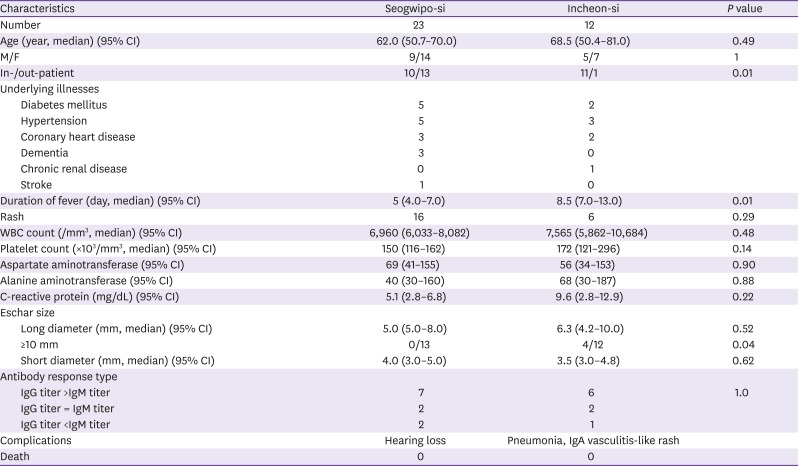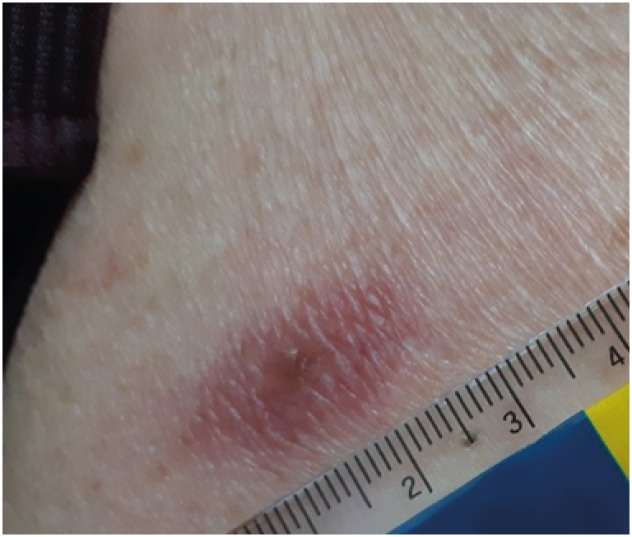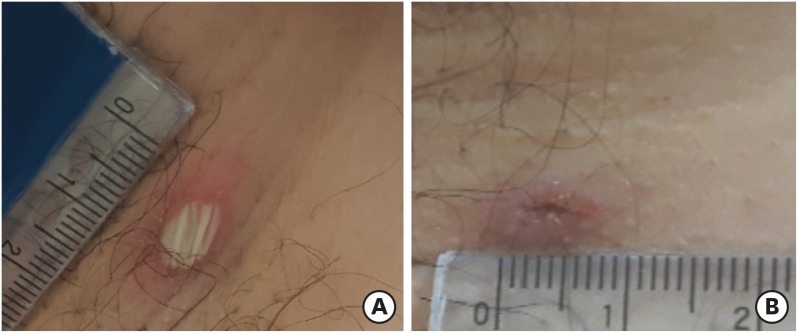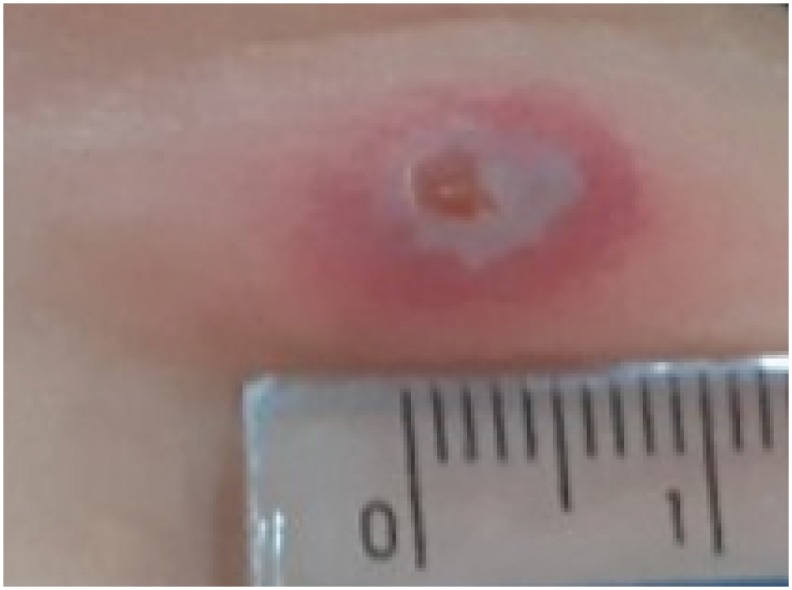1. Fletcher W, Field JW. The tsutsugamushi disease in the Federated Malay States. Bull Inst Med Res FMS. 1927; 1:26.
2. Nagino T. A proposal. Tokyo Med J. 1878; (20):1–2.
3. Palm TA. Some account of a disease called “Shima-Mushi” or “Island Insect Disease” by the natives of Japan; peculiar it is believed, to that country, and hitherto not described. Edinb Med J. 1878; 24:128–132.
4. Baelz E. Kawakami. Das japanische Fluss- oder Ueberschwemmmungfieber, eine acute Infectionskrankheit. Virchows Arch Pathol Anat Physiol Klin Med. 1879; 78:373–420.
5. Tanaka K. Ueber meine japanische Kedani-Krankheit. Cent fur Bakteriol Parasitenkd und Infekt. 1906; 42:16–18. 104–18. 235–40. 329–34.
6. Kawamura R. Studies on Tsutsugamushi disease (Japanese flood fever). Cincinnati: Spokesman Printing Co.;1926.
7. Ueno Y. Studies on tsutsugamushi and tsutsugamushi-disease of Hachijo Island. Med Entomol Zool. 1956; 7:231–253.

8. Güther CEM. A survey of endemic typhus in New Guinea. Med J Aust. 1940; 2:564–573.
9. Krishnan KV, Smith ROA, Bose PN, Neogy KN, Ghosh Roy BK, Ghosh M. Clinical features and laboratory diagnosis of XK or mite-borne typhus as observed in 102 cases in the Barrackpore area. Ind Med Gaz. 1949; 84:33–39. PMID:
18130765.
10. Munro-Faure AD, Andrew R, Missen GA, Mackay-dick J. Scrub typhus in Korea. J R Army Med Corps. 1951; 97:227–229. PMID:
14889509.
11. Sassa H, Shibata T, Oba M, Okubo M, Niwa T, Matsui E. An autopsy case of the first occurrence of tsutsugamushi disease in Gifu Prefecture--with special reference to complication with disseminated intravascular coagulation. Nippon Naika Gakkai Zasshi. 1984; 73:401–407. PMID:
6376667.
12. Jensenius M, Montelius R, Berild D, Vene S. Scrub typhus imported to Scandinavia. Scand J Infect Dis. 2006; 38:200–202. PMID:
16500780.

13. Shiao CC, Lin SY. Eschar: a clue to scrub typhus. CMAJ. 2011; 183:E1152. PMID:
21911554.
14. Durey A, Kwon HY, Park YK, Baek J, Han SB, Kang JS, Lee JS. A case of scrub typhus complicated with a splenic infarction. Infect Chemother. 2018; 50:55–58. PMID:
29637756.

15. Weitzel T, Aylwin M, Martínez-Valdebenito C, Jiang J, Munita JM, Thompson L, Abarca K, Richards AL. Imported scrub typhus: first case in South America and review of the literature. Trop Dis Travel Med Vaccines. 2018; 4:10. PMID:
30140442.

16. Smadel JE, Ley HL Jr, Diercks FH, Traub R. Immunity in scrub typhus: resistance to induced reinfection. AMA Arch Pathol. 1950; 50:847–861. PMID:
14789327.
17. Chung MH, Lee JS, Baek JH, Kim M, Kang JS. Persistence of
Orientia tsutsugamushi in humans. J Korean Med Sci. 2012; 27:231–235. PMID:
22379331.
18. Chung MH, Kang JS. History of tsutsugamushi disease in Korea. Infect Chemother. 2019; 51:196–209. PMID:
31271001.

19. Su TH, Liu CJ, Chen DS, Kao JH. Milder clinical manifestation of scrub typhus in Kinmen, Taiwan. J Formos Med Assoc. 2013; 112:201–207. PMID:
23537866.

20. Koralur MC, Singh R, Varma M, Stenos J, Bairy I. Scrub typhus reinfection. Trop Doct. 2018; 48:69–72. PMID:
29137528.

21. Yi KS, Ching Y, Chun CH, Suto T. Importance of finding eschar in the early diagnosis of tsutsugamushi disease. Korean J Med. 1987; 30:1009–1016.
22. Bourgeois AL, Olson JG, Fang RC, Huang J, Wang CL, Chow L, Bechthold D, Dennis DT, Coolbaugh JC, Weiss E. Humoral and cellular responses in scrub typhus patients reflecting primary infection and reinfection with
Rickettsia tsutsugamushi. Am J Trop Med Hyg. 1982; 31:532–540. PMID:
6805348.
23. Lee HW, Cho PY, Moon SU, Na BK, Kang YJ, Sohn Y, Youn SK, Hong Y, Kim TS. Current situation of scrub typhus in South Korea from 2001-2013. Parasit Vectors. 2015; 8:238. PMID:
25928653.

24. Lee SU. Epidemiologic characteristics of scrub typhus on Jeju Island. Epidemiol Health. 2018; 39:e2017060r.

25. Chang WH. Tsutsugamushi disease in Korea. Seoul: Seo Heung Publishing Co.;1994.
26. Tanaka K. Important clinical findings of kedani (tsutsugamushi) disease. Kansenshogaku Zasshi. 1929; 4:168–170.
27. Sunyakumthorn P, Somponpun SJ, Im-Erbsin R, Anantatat T, Jenjaroen K, Dunachie SJ, Lombardini ED, Burke RL, Blacksell SD, Jones JW, Mason CJ, Richards AL, Day NPJ, Paris DH. Characterization of the rhesus macaque (Macacamulatta) scrub typhus model: susceptibility to intradermal challenge with the human pathogen
Orientia tsutsugamushi Karp. PLoS Negl Trop Dis. 2018; 12:e0006305. PMID:
29522521.
28. Suto T. On new tsutsugamushi disease. Akita: Mumyosha Publ Co.;1991.
29. Kanai T. Studies on the Shichito fever, especially on the epidemiology of Sueyoshi area in Hachijo Island. Showa Igakkai Zasshi. 1958; 20:767–782.
30. Sayen JJ, Pond HS, Forrester JS, Wood AC. Scrub typhus in Assam and Burma; a clinical study of 616 cases. Medicine (Baltimore). 1946; 25:155–214. PMID:
20986167.
31. Choi WY, Lee SY, Kwon HY, Im JH, Durey A, Baek JH, Kim YS, Kang JS, Lee JS. A case of scrub typhus complicated by adult respiratory distress syndrome and successful management with extracorporeal membrane oxygenation. Am J Trop Med Hyg. 2016; 95:554–557. PMID:
27458040.

32. Xu G, Mendell NL, Liang Y, Shelite TR, Goez-Rivillas Y, Soong L, Bouyer DH, Walker DH. CD8+ T cells provide immune protection against murine disseminated endotheliotropic
Orientia tsutsugamushi infection. PLoS Negl Trop Dis. 2017; 11:e0005763. PMID:
28723951.
33. Yoo JR, Heo ST, Koh YS, Kim S, Kim S. Unusual genotypic distribution of
Orientia tsutsugamushi strains causing human infections on Jeju Island. Am J Trop Med Hyg. 2014; 90:507–510. PMID:
24445200.








 PDF
PDF ePub
ePub Citation
Citation Print
Print



 XML Download
XML Download